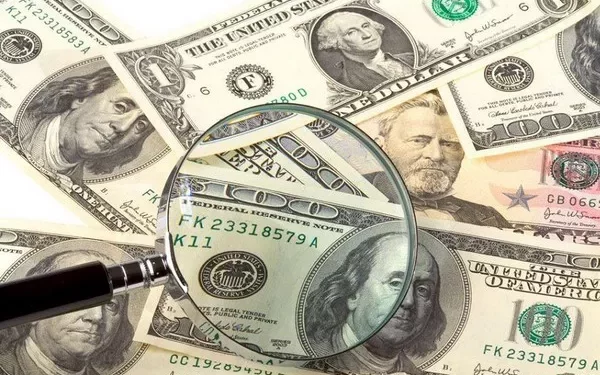In the world of international finance, currency exchange rates play a crucial role in determining the value of money across borders. For travelers, investors, businesses, and governments alike, knowing the current exchange rate between currencies is essential for making informed decisions. In this article, we will delve into the specifics of the current exchange rate between the US dollar (USD) and the euro (EUR), particularly focusing on what $100 translates to in euros.
Understanding Exchange Rates
Before we delve into the specifics of the USD to EUR exchange rate, let’s first understand what exchange rates are and how they are determined. An exchange rate is the price of one currency in terms of another. It represents the value of one currency relative to another currency. Exchange rates are determined by the foreign exchange market (Forex), which operates 24 hours a day, five days a week, across different financial centers globally.
Several factors influence exchange rates, including:
Interest Rates: Higher interest rates in a country can attract foreign capital, increasing the demand for its currency and thus appreciating its value.
Economic Indicators: Economic data such as GDP growth, inflation rates, employment figures, and trade balances can impact currency values.
Political Stability: Countries with stable political environments tend to have stronger currencies as they are perceived as safer investments.
Market Sentiment: Market sentiment and speculation can also influence exchange rates in the short term, as traders react to news and events.
Current USD to EUR Exchange Rate
As of the latest data available, the current exchange rate between the US dollar (USD) and the euro (EUR) stands at 0.92. This means that for every US dollar, you would receive [insert EUR equivalent] euros.
It’s important to note that exchange rates fluctuate constantly due to the dynamic nature of the foreign exchange market. Factors such as economic data releases, geopolitical events, central bank interventions, and market sentiment can all contribute to short-term fluctuations in exchange rates.
Calculating $100 in Euros
Now, let’s calculate what $100 translates to in euros based on the current exchange rate. Using the exchange rate of 0.92, we can perform the following calculation:
$100 * 0.92 = 92 euros
Therefore, $100 is equivalent to 92 euros based on the current exchange rate.
Implications for Travelers, Investors, and Businesses
The exchange rate between the US dollar and the euro has implications for various stakeholders, including travelers, investors, and businesses.
For Travelers:
When traveling from the United States to countries in the Eurozone, understanding the exchange rate is crucial for budgeting and managing expenses.
A strong US dollar relative to the euro means that travelers from the US can get more value for their money when exchanging currency.
For Investors:
Investors who trade currencies or invest in foreign assets need to closely monitor exchange rates to capitalize on potential opportunities.
Fluctuations in the USD to EUR exchange rate can impact the returns on investments denominated in either currency.
For Businesses:
Businesses engaged in international trade must consider exchange rate fluctuations when pricing their products and managing foreign currency transactions.
A favorable exchange rate can make exports more competitive in foreign markets, while an unfavorable exchange rate can increase import costs.
Factors Affecting the USD to EUR Exchange Rate
Several factors can influence the exchange rate between the US dollar and the euro:
Monetary Policy: The monetary policies of the Federal Reserve (Fed) in the United States and the European Central Bank (ECB) in the Eurozone can impact interest rates and, consequently, exchange rates.
Economic Performance: Economic indicators such as GDP growth, inflation rates, unemployment levels, and trade balances can affect investor confidence and currency valuations.
See Also:Current USD Exchange Rate: What is $109 us in Australian dollars?
Political Events: Political events such as elections, geopolitical tensions, and policy decisions can create uncertainty in the market and lead to fluctuations in exchange rates.
Market Sentiment: Market sentiment and speculative trading can cause short-term volatility in exchange rates as traders react to news and events.
Historical Trends and Future Outlook
Over the years, the USD to EUR exchange rate has exhibited various trends influenced by economic, political, and market factors. Historical data analysis can provide insights into past trends and patterns, but predicting future exchange rate movements with certainty is challenging due to the complexity of factors involved.
However, economists, analysts, and financial institutions often provide forecasts and projections based on current economic conditions and trends. These forecasts can help stakeholders make informed decisions, but it’s essential to remember that they are subject to change based on evolving circumstances.
Conclusion
In conclusion, the current exchange rate between the US dollar and the euro has significant implications for various stakeholders, including travelers, investors, and businesses. Understanding exchange rates and their determinants is essential for making informed decisions in the global economy.
As of the latest data available, the exchange rate between the USD and EUR stands at 0.92. This means that $100 is equivalent to 92 euros based on the current exchange rate. However, exchange rates are subject to fluctuations due to various factors, so it’s crucial to stay informed and adapt to changing market conditions.
Whether you’re planning a trip, managing investments, or conducting business internationally, staying abreast of exchange rate movements can help you navigate the complexities of the global financial landscape effectively.
Related Topics:
Current USD Exchange Rate: What Is 500 USD to JPY?
Current USD Exchange Rate: What Is 800 Dollars in Pounds?
Current USD Exchange Rate: What Is $100 USD in AUD?



























